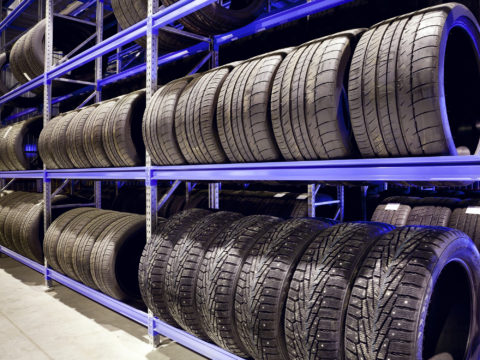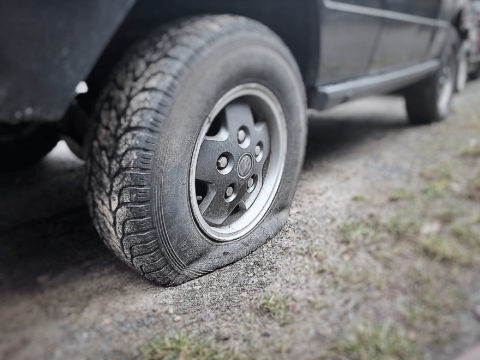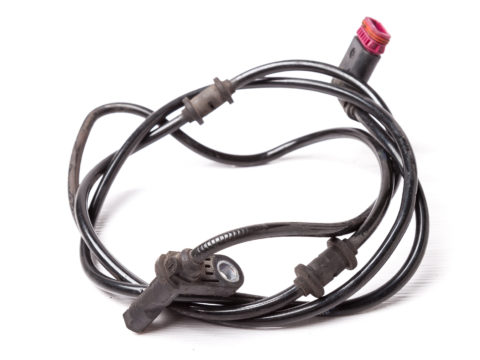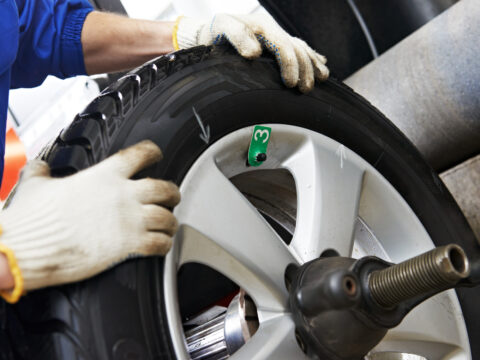Wheel spacers have a somewhat polarizing reputation in many people’s eyes. They are often considered either dangerous or safe and beneficial for any vehicle, with nothing in between.
If you’re thinking of installing wheel spacers on your vehicle, read on to learn about their pros and cons.
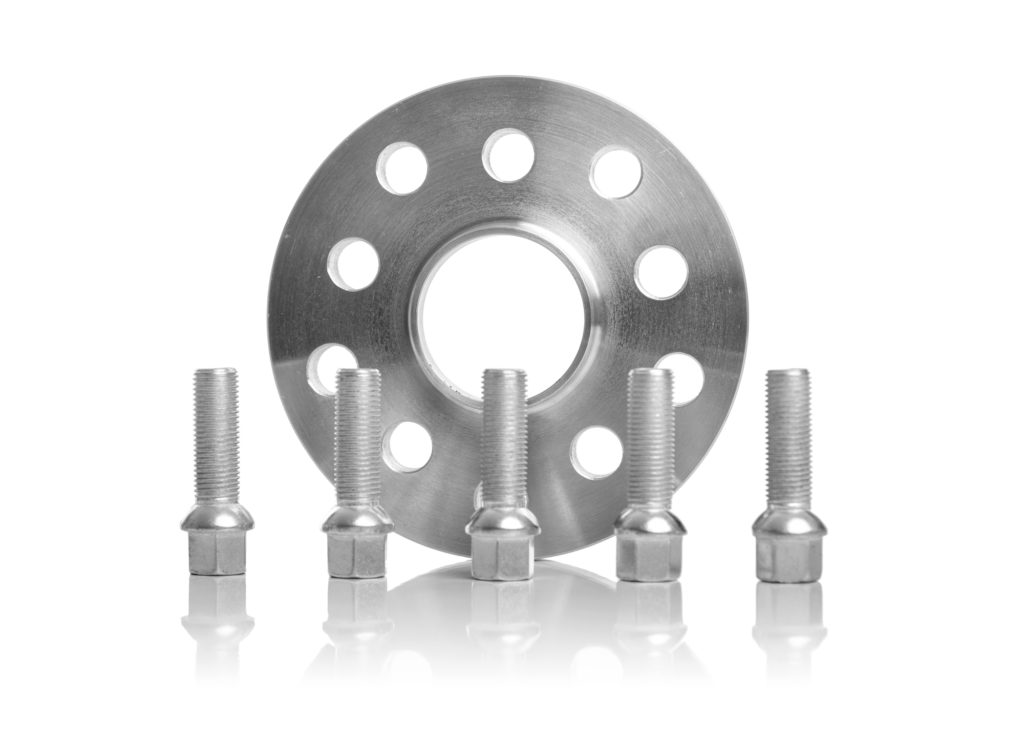
Wheel spacers do what their name implies: alter the space of your wheels beneath your vehicle’s fender. There are many different reasons why someone might want to adjust the spacing of their wheels. One example is altering their car’s handling because they do not fancy the current offset of their wheels due to them not handling slow speed turns well.
Using wheel spacers can remedy that problem and many others. Still, before you go ahead and try installing wheel spacers yourself, you should first familiarize yourself with their functionality.
Contents
How Do They Work?
To put it plainly, wheel spacers make a vehicle’s natural stance wider by increasing the amount of space between the inner side of the wheel and its mounting flange.
Now, that may not seem like all that much, but keep in mind that this effect can have a lot of variation depending on the type of wheel spacer, as not all-wheel spacers are the same! Wheel spacers come in different designs with unique ranges, thicknesses, and other features.
While having such variation is excellent because it means that you will find a wheel spacer that at least somewhat meets your needs, it is also a con for the same reason. With so many kinds of wheel spacers available on the market, finding one that has exactly what you’re looking for can prove challenging at times.
That said, so long as you understand how wheel spacers work, picking out the right one for your vehicle will not take long.
Importance of Wheel Spacers in a Car
With the functionality of wheel spacers out of the way, let’s cover some of the essential aspects of having wheel spacers in a car.
Benefit 1: They Adjust the Offset of a Vehicle
As mentioned earlier, some people install wheel spacers because they want to adjust the offset of their wheels for whatever reason.
Suppose you find that your vehicle suffers from wheels that do not have a good offset. In that case, wheel spacers are an excellent way to fix that particular part of the vehicle.
Benefit 2: They Are Cost-Effective
Considering the high degree of impact that wheel spacers have on a vehicle, it might surprise you that they are among the more cost-effective methods for increasing the width of a vehicle’s track without getting new wheels.
Generally, you can find a quality pack of two-wheel spacers for under $100. Though typically, they won’t sell for anything cheaper than $60.
Benefit 3: They Provide Better Overall Traction
Having a more expansive stance means better stability. So, if you install wheel spacers, you can fully expect your vehicle to have a better grip than it did previously.
Many people view this as the ultimate enhancement that wheel spacers provide, making it one of the primary reasons for installing them.
Benefit 4: They Make a Vehicle Standout More
The visual difference between a vehicle with them and a vehicle without them is very noticeable, depending on the type of wheel spacers.
Because of this, wheel spacers bring an aesthetic change along with their performance enhancements so that you can get the best of both worlds.
However, this is only if you are the kind of person who likes the look of a wider wheelbase, as it is not visually appealing to everyone.
Are Wheel Spacers Safe for Daily Driving?
The short answer is yes. However, the longer answer is that wheel spacers are safe for daily driving if you have the right kind and install them correctly.
You can apply this same rule of thumb to most vehicle modifications, but because wheel spacers change a significant part of your vehicle’s performance, it is even more critical to ensure you install them properly.
The last thing you want while you’re driving around is for the spacer to suddenly come undone or loose, as that can bring about a whole host of issues.
Are They Safe for Highway Use?
Wheel spacers are safe for highway use, but be mindful of how big your spacers are if you plan to go on the highway.
One consensus is that you can use wheel spacers that go up to two or three inches in size. However, it is imperative to always ensure that the lug nuts’ torque that holds the wheel spacers to the axle is solid.
To be as safe as possible, regularly check the torque of the nuts holding your spacers on after you install them. Do not just put the spacers on, adjust the torque, put the tires back on, and then completely forget that the spacers exist.
Are Wheels Spacers Safe for Off-Roading?
Lug-centric spacers are not suitable for off-roading. Instead, use hub-centric wheel spacers, as they will provide your vehicle with more balanced-wheel rotation and stability.
If you are going to drive on plenty of uneven ground that is constantly shifting, you will want to have your spacers giving you as much control as possible at all times. Also, keep in mind the type of off-road terrain you are driving on, because it will most definitely have less traction than asphalt roads, and that will work against the added traction of your wheel spacers.
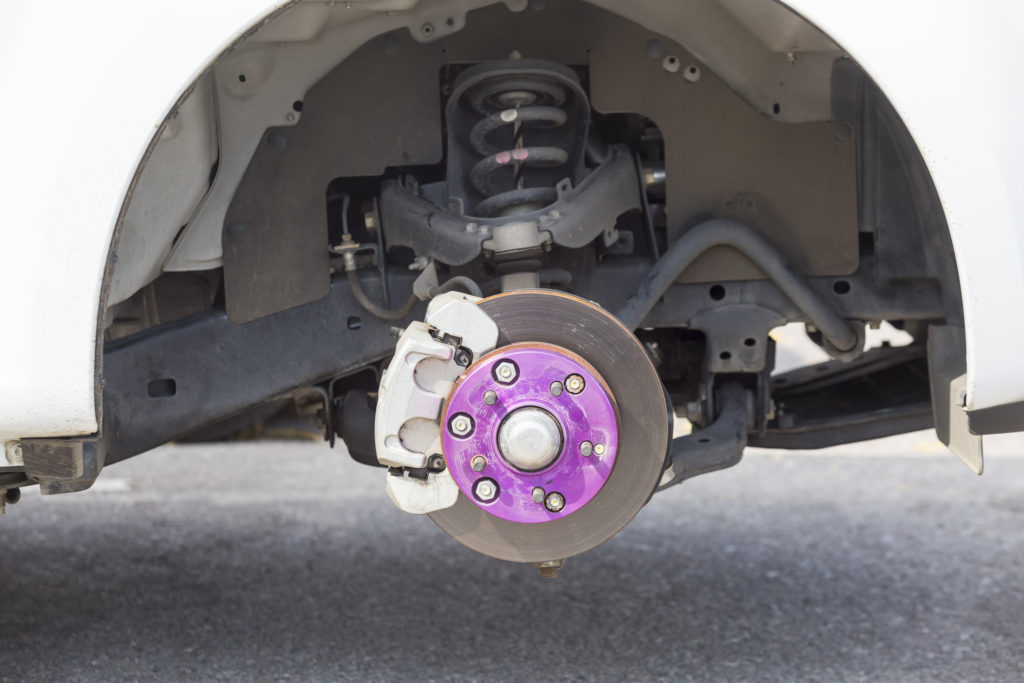
Are Wheel Spacers Safe for Racing?
Yes, wheel spacers are safe for racing, and many people use them for racing because of the added traction and grip benefits.
Similar to off-roading, you will want to get hub-centric wheel spacers instead of lug-centric wheel spacers. The main reason for this is that the lug-centric wheel spacers have a tough time handling the frequent turning at high speeds on racetracks. So, ensure you get hub-centric wheel spacers for your own safety and the safety of anyone you might race alongside.
Are Wheel Spacers Safe on Trucks and Trailers?
Keeping in line with the previous two points, wheel spacers are fine for trucks and trailers, but you need the hub-centric ones.
They can handle the extra weight that trucks and trailers come with far better than their lug-centric counterparts. So, you won’t have to worry about them giving out under immense amounts of pressure.
What Size Wheel Spacers Are Safe?
Contrary to what some people think, there is a difference in safety when it comes to using wheel spacers of different sizes.
More often than not, thicker wheel spacers require added steps to make them safe like their smaller counterparts.
Take two-inch wheel spacers as an example. These are safe to use, but if you don’t measure your wheels first to ensure there is enough space for thicker wheel spacers, the thickness may cause your wheels to hit your fender.
While there are other examples similar to that one, you will always be best served by following your wheel spacer’s installation manual to prevent any issues in the future. And this rule will always be the case, regardless of the size of your spacers.
Wheel Spacers FAQs
Here are answers to a few questions that you may still have about wheel spacers at this point.
Will You Have Warranty or Insurance Issues If You Install Wheel Spacers?
This depends on the warranty and insurance of your vehicle. Though the majority of the time, installing wheel spacers will impact your vehicle’s warranty, as you are adding a significant modification to the vehicle.
To know for sure, consult the details of the warranty you have on your vehicle.
Are Wheel Spacers Safe for Towing?
Yes, wheel spacers are safe for towing, especially if you have hub-centric spacers. Just don’t try towing anything that is insanely heavy, and if you are uncertain of what is ‘too heavy,’ use your judgment.
If something looks like it belongs in the competent hands of a tow truck, then your car/truck with wheel spacers probably should not take a crack at it.
Are Wheel Spacers Safe at High Speeds?
Yes, if they are high-quality wheel spacers and you are not driving at excessively high speeds, then they are fine. And as always, it also greatly helps if you have hub-centric wheel spacers.
Will The Spacers Affect My Wheel Alignment?
If you install wheel spacers correctly, they will not affect the alignment of your vehicle’s wheels. They will only push the wheels out further from the vehicle, so the alignment of the wheels will remain the same.
What Is the Difference Between Wheel Spacers and Wheel Adapters?
At a glance, you might think that wheel spacers and wheel adapters do the same thing.
However, wheel spacers change the amount of space between a wheel and its mounting surface. In contrast, wheel adapters fit the wheels of one vehicle to the hub of a different vehicle by changing the bolt patterns.

